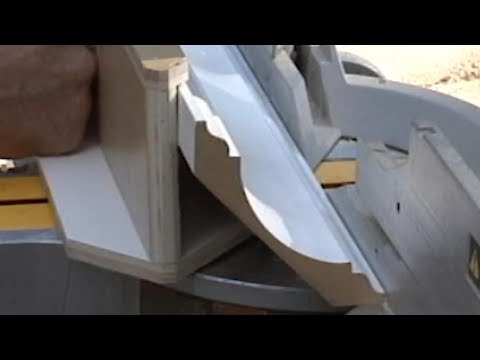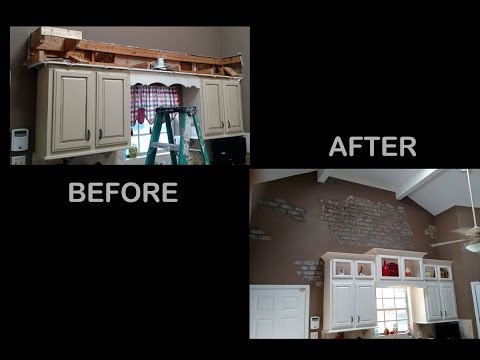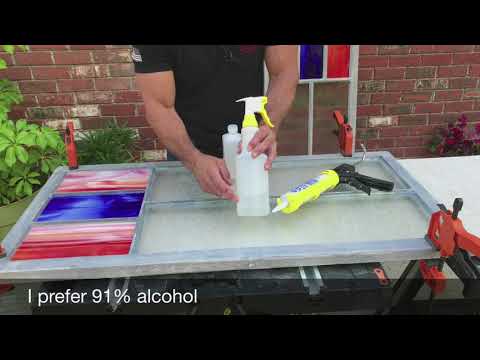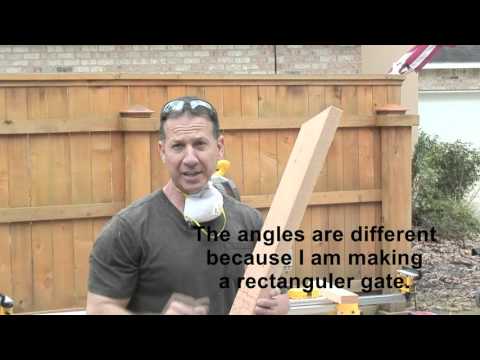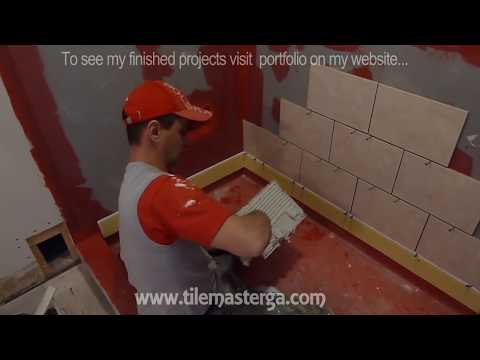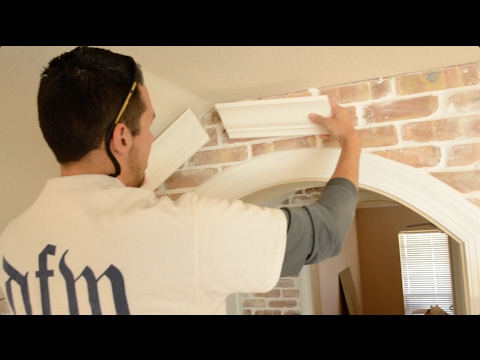When installing a short run of cabinets, you can use a story stick and a level
In this video, Paul Ricalde is installing a couple of banks of vanity cabinets They are kitchen-style vanities, meaning that they are slightly taller than regular vanities. The cabinets in this video are 34-1/2 in tall.
- Cut a stick that it the height of the cabinet
- Make some marks on the wall using the stick.
- Use the level to find the high spot.
- Draw a level line in the walls (into and out of the corner)
- Check the line with your stick to look for high spots.
- Place a shim in the back corner to raise the stick to the line. This is the shim that the cabinet will sit on.
Filler strips between cabinets can help center the unit (or keep the drawers from knocking against the door trim).
- Clamp the filler strip on the end of the face frame, flush with the outside, and screw from the filler strip into the face frame (to hide the screw head).
- Measure the filler strip plus face frame overhang, 1-1/4 in this case, and mark that on the back wall. This is where the back corner will be.
Cutting holes in cabinets for plumbing pipes and the like
- The filler strip mark is also a reference line for measuring pipe cutouts.
- Mark the center points of pipes on the wall and measure over to them from the reference line.
- To establish the height of the pipes, measure down from the level line, not up from the floor.
- Tip: mark an X in the back of the cabinet in the corner that butts the sidewall. Do this every time and it will be a habit that X means corner and you will never cur holes in the wrong side of a vanity cabinet.
- 'Nother tip: Double check your measurements before cutting the cabinet.
- Drill through the back enough to make a pilot mark, then drill through the front. Make sure your leg is out of the way so that you don't drill into your knee (ouch!)
- Slide the cabinet through the holes and set it on the shims. It should be perfectly placed for fastening.
- Make sure the cabinet is level with any others that a countertop will need to span and screw into studs using coarse-thread screws.
Keep screws up high — above any water lines, if you get my drift ...
—Paul Ricalde is a home improvement contractor and fireman in New Orleans, LA. His YouTube channel is rich with construction/remodeling videos.
